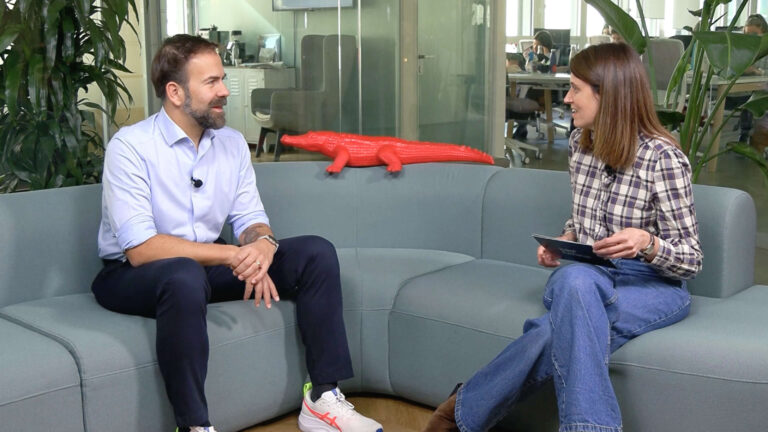Want more? Check out the Innovators Unscripted Bonus Round with Leo O’Connor.
Paramount’s Leo O’Connor on evolving programmatic in streaming TV
Welcome to Innovators Unscripted, a series where we share unfiltered insights from some of the most disruptive voices in today’s advertising ecosystem. Leo O’Connor, EVP, streaming at Paramount, joins for a conversation about bringing programmatic capabilities to streaming TV, reducing complexity for marketers, and how to stay ahead as the programmatic streaming market matures.
The video transcript below has been lightly edited for clarity.
Streaming isn’t just about content. It’s also about data, signals, and technical transmission. How are you simplifying that complexity for marketers?
Leo O’Connor: I couldn’t agree more with the premise. We think about every impression as a mix of content metadata and device metadata. For every buyer, one may be more important than the other.
We’ve found that we need to provide a steady and standardized amount of bidstream data to partners. We’ve put a ton of work into packing the bidstream full of information for partners—both device and content metadata—and enabling the ability to optimize against both.
You were an early leader in opening up premium TV inventory to programmatic, through Paramount+ of course. How have you grown your programmatic streaming business since then, and what are you doing to make it easier for buyers to transact?
LO: It’s definitely been a rocket ship. In the early days, Pluto TV was certainly a pioneer in programmatic. The scale of Pluto, along with Paramount+, really gave us a lot of power to come to market and say yes to trying new things.
“It’s continued to grow. We’ve seen that the private deals side of the business has become the real driver of a lot of this.”
Clients are coming to us and buying the way they always have—getting adjacency to our programming—and also bringing data to be able to target audiences and manage frequency. We’ve really leaned into the private deals and one-to-one partnerships, letting clients bring their best tools to the content they love.
How does partnering with Index help you continue to innovate and evolve your programmatic offering?
LO: We’ve been talking for a long time about how to make the video experience better and really ready for prime time, and bring programmatic into these environments.
With video, you have a lot of concurrent viewers watching shows at once. You have a really high-stakes chance to serve someone a quality ad break, and we don’t want to screw it up with the complexity of this.
“Index has been a really great partner of ours.”
We’ve brought a lot of challenges to Index around things like multi-bidding and podded bidding, and leaning in and testing new developments in RTB developments, and doing it with an eye towards revenue neutrality. How do we make things work better, faster, cleaner—but also still make the same amount of money? We’ve done a lot of great stuff together and are excited to do more.
For many smaller brands or performance marketers, TV was always out of reach. Streaming has opened new doors. How have you seen the typical buyer profile evolve, and what’s made that possible?
LO: One of the biggest unlocks of programmatic has been expanding the total addressable market for streaming video beyond the thousand or so brands that have always bought traditional TV. We now see tens of thousands of brands buying from us.
“The buyer profile could be one of the biggest marketers in the world, or it could be someone looking to spend a focused budget to optimize against an outcome.”
We need that kind of variety to serve breaks, because they’re bought impression by impression, and you need a lot of volume to fill the ad log on these services every day.
What’s one thing marketers need to understand about streaming to stay ahead as it continues to mature?
LO: One thing we’re really educating quite a bit on is the prime-time nature of the viewing experience. Especially on Paramount+, we have franchises like “Landman” and a lot of “Yellowstone” spinoffs, like “1923.”
These shows, unsurprisingly, are watched the way we’ve always watched premium TV. They’re watched in the evening, in the living room, with a lot of people watching in this very condensed time frame.
We’ve seen that a lot of the tech and programmatic infrastructure wasn’t built to pace and to have enough budget left to deliver in prime time. A lot of these algorithms are burning through budget earlier in the day.
It sounds basic, but partnering with your SSPs and publisher partners to make sure you reserve budget for when everyone is watching the Taylor Sheridan show in prime time. That’s really where you want to be. That’s when people are leaned in, and viewer experiences are heavily on-demand and highly concurrent.
What’s the biggest shift you see coming in the next 12 months?
LO: There’s a lot of buzz around optimized buying for performance. That’s where this is going. There are a couple of different flavors of that.
“We’re doing it today with great partners who are coming in and expanding beyond just reach and frequency and trying to buy outcome-based buys on TV.”
I think it’s going to get better, smarter, and faster with AI and data-optimized tools.
We break down all the complexities of programmatic streaming TV in our Index Explains video series. Tune in to learn how to make the most of your streaming investments.
Back to blog






